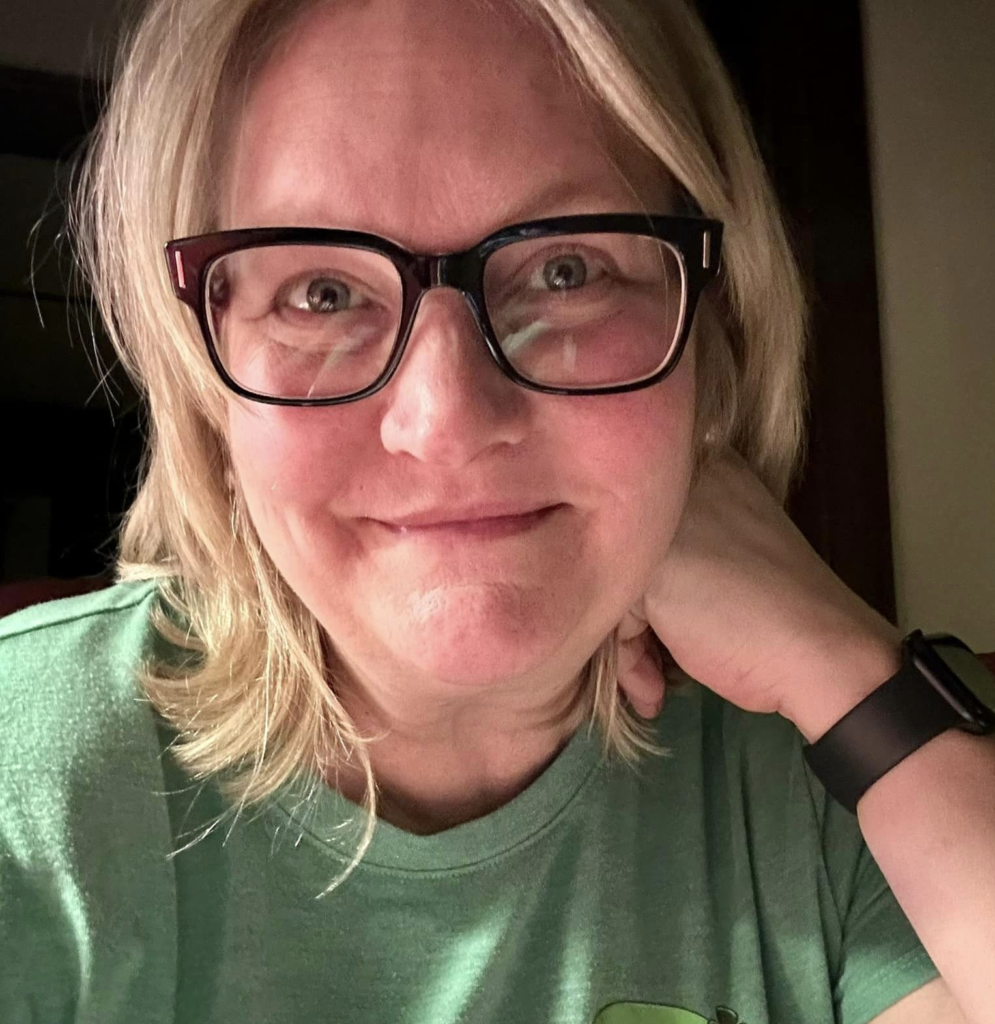As cases of the coronavirus rise in Iredell County, don’t expect to be told the specific area of the county’s new diagnoses.
That would risk identifying a patient … and that is illegal, said Iredell County Health Director Jane Hinson.
Hinson cited Iredell’s size as the reason health officials here – unlike in other counties – don’t offer more detailed information about general locations of diagnoses. “The risk of identification related to the sharing of cities and zip codes is much greater in Iredell County than it is in a county with a population of greater than a million people,” she wrote in an email to the Scoop this week.
Iredell’s population is about 180,000; people with Mooresville addresses account for more than 70,000 of that figure.
“Releasing identifiable information for anyone who has tested positive for COVID-19 would be unlawful” per the guidance of the N.C. Department of Health and Human Services, Hinson said.
That has some residents and healthcare workers concerned, leading to discussions – privately and on social media – about “controlled panic,” or the practice of local health officials picking and choosing information they share about a public-health crisis.
False sense of security
“There was a huge failure to break down information for the public,” said one public-safety healthcare professional – one of several to speak with the Scoop this week under condition of anonymity.
They all expressed concerns about local public health officials not providing adequate information to the public and how that could have led to a false sense of security, eventually putting them – and the public – at heightened risk.
Would arming residents with more information – including cities/towns in which the positive cases are being reported – have created “mass hysteria”? Or would it have encouraged more people to self-quarantine and better adhere to social-distancing recommendations to slow the spread of COVID-19?
“Regardless of where the confirmed cases are located, the public should always take the recommended precautions,” Hinson said, noting how rapidly Iredell cases are increasing.
Iredell County is currently reporting 15 positive cases of COVID-19. But results on more than 15,000 tests state-wide are still pending, NC Health Director Elizabeth Tilson said Thursday. Test results are taking anywhere from 7-10 days, Iredell Health System’s CEO John Green said in a WSIC radio broadcast Monday. That’s despite LabCorp announcing recently it could process 20,000 COVID-19 tests per day. Quest Diagnostics, another lab processing COVID-19 tests, said it can process 25,000 tests a day.
Misleading infection totals
The actual number of cases will likely never be known, though, partly because some people with suspected symptoms aren’t being tested at all.
Some speculate that area hospital emergency rooms aren’t testing because they aren’t usual test-sites. Others say COVID-19 is a virus, and unless a test result would alter the course of treatment, numbers aren’t necessary except for statistics. But many healthcare workers blame something more simple for why some symptomatic patients aren’t being tested: a test-kit shortage.
“They’re not testing people like people think they’re going to,” one provider said. “The more testing you do, the more positives you’re going to find.”
An emergency-room nurse in a neighboring county said her hospital wasn’t testing initially because of a test-kit shortage “and it costs the state money to process the tests.”
Hospitals across Iredell County have differing policies about testing for COVID-19. They were originally asking screening questions about patients’ travel and exposure, but that isn’t as important now that the coronavirus is “community acquired,” one provider said. Most – if not all – testing facilities have required a negative flu test before administering the COVID-19 test. One local hospital requires a chest x-ray before COVID-19 testing, the provider said: “Each hospital seems to be handling things differently.”
Healthcare workers say state health officials and the Centers for Disease Control and Prevention change guidelines almost daily, which leads to confusion for them – and the public. Is testing available, or no? Are healthcare providers at drive-through testing sites safe, or no? Is it okay to encounter patients while not wearing a mask, or no?
An Iredell County intensive-care-unit nurse advocates more COVID-19 testing. “During the flu season, from September to April, we screen anyone who comes into our hospital with a fever or even the inkling of the flu,” she said. “Every person who has an inkling of (COVID-19) should be screened.”
We asked Iredell Health System’s director of planning, community relations and marketing, Meagan Kowalski, if Iredell Memorial Hospital, or hospitals in general, are testing for COVID-19 when patients appear with symptoms and, if not, if that has anything to do with a test shortage.
“Iredell Health System has the capability to test for COVID-19 at both Iredell Memorial Hospital and at some of our outpatient clinics,” she said. “Specific criteria must be met before a test is administered.”
But healthcare facilities and first responders are short on far more than COVID-19 test kits …
Failing our front lines
Despite healthcare administrators and managers assuring the public they’re prepared, boots-on-the-ground are singing a far different tune.
“We’re concerned about our supplies,” said one ER nurse. “We’re low.”
“I’ve been in emergency services for 20 years, and I am more stressed about this than I was the day of 9/11,” one provider said. “It’s an invisible enemy that you can take home to your family.”
He said providers are undressing before entering their homes and – after long shifts – jumping in disinfecting showers before seeing or spending time with their families.
“I’m afraid that my friends and I in healthcare are being told to stretch our PPE (personal protective equipment) to the max in an unsafe manner to where we are going to be exposed and bring it home to our families,” an ICU nurse said. “I expect I will be exposed at some point – I believe I already have been. I’m not scared at this point, but I don’t want to bring this home to my kids or my family. I don’t want to be a vector.”
Hospitals and healthcare facilities are low on critical protective supplies to protect their staff members from COVID-19, despite most of the nation still waiting for cases to peak.
“Recommendations for PPE, unfortunately, seem to be changing for us based on the supply,” said one provider.
N-95 masks – designed to protect healthcare workers from, for instance, respiratory droplets that spread COVID-19 – have historically been single-use, single-patient pieces of equipment. “Now they’re telling us that as long as our mask isn’t saturated with bodily fluids, we need to use it as long as we can with light surface cleaning,” he said, adding that patients are now wearing surgical masks, which are less effective than N-95s.
An ER nurse said her administrators are changing protection policies all the time based on PPE supply for staff and day-to-day changes from the CDC. Her hospital lost many masks because “random people walked in the hospital and stole them” when news of COVID-19 started spreading. The hospital eventually restricted visitors, many of whom would wear the masks, in an effort to save them for hospital staff.
“At first, our management sent an email that we weren’t allowed to wear masks at all unless we were physically going to see a patient with respiratory problems,” she said. Later, providers were told to wear one N-95 mask all day without touching it and instructed to cover their mask with a surgical mask. The surgical mask can be disposed of after a patient encounter.
Like doctors and nurses, first responders – including paramedics and firefighters – will sometimes be the first to interact with an infected patient. “Hospitals have longer contact with patients, but EMS has much more intimate contact with them,” one provider said. Entering an infected patient’s home, or riding in an ambulance to the hospital with him/her, makes paramedics “much more likely to be exposed,” he explained.
“EMS is issuing one N-95 mask per employee,” he said.
Added the ICU nurse: “In a perfect world, we would have resources. Nobody was prepared. Here in the US, it comes all the way from the top. Nobody was proactive; they were all reactive.”
Heroes
But like so many stories in which the heroes are the people running in when the rest of us are running out, first responders and healthcare providers are anxious to roll up their sleeves and help.
“I want to help – I just don’t know how right now,” said a family nurse practitioner (FNP) who was recently furloughed from her private-practice job. That will likely become more commonplace as routine medical exams are cancelled or delayed to protect regular patients’ health in doctors’ offices.
The FNP – also a mother of three – said she is looking for ways she can volunteer. “I’m ready to take the risk, knowing I’m probably going to end up sick.”
She said she is concerned about people who aren’t taking the virus seriously. “A lot of people won’t take it seriously until it affects them personally,” she said. “It hasn’t hit close enough to home for them yet.”
The ICU nurse grew emotional. “For any nurse, we go into this because we have an inherent want and need to help; this is what we are here for,” she said. “We would not have gone through those years of anguish and hell so that we would go to work knowing we can’t do anything for you.”
She praised her colleagues. “My God, we have great people! We have committed to a life of servitude. We’re worried, wondering: if this person has COVID-19, have I done enough? Have I been taught enough?”
“Giving someone a dignified death is one of my passions in life and one of the reasons I became an ICU nurse,” she continued. “The fact that I can’t do that for somebody – that they will suffer and die because of our lack of resources – it makes me sick!”





